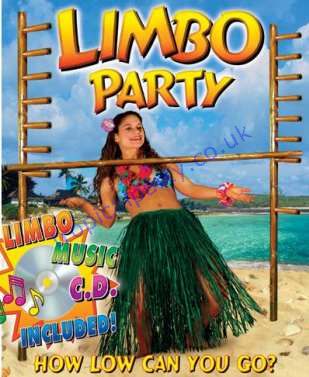
One of the first performances recorded in the history of the New World was of limbo, the “slave ship dance.†Slave ship logs as early as 1664 document this dance in the experience of enslaved Africans who traveled across the Middle Passage. Known for its effectiveness as a “ritual of rebirth†based on the healthy exercise received from the dance, limbo forms part of the entertainment repertoire in the contemporary tourism industry, and in 1993 to 1994, and 2007 it was a popular dance in dancehall, along with the tatti, the world dance and the erkle. The use of these dances in this way highlights the attempt to locate the history of dancehall in the ancient practice of free Africans and, later, the enslaved peoples… The dance, which involves the body moving under a stick, is thought to have emerged out of the lack of space available on the slave ships, necessitating the slaves bending themselves like spiders. The dance reflects this in the constant lowering of the stick, ostensibly until it touches the ground, and clearing the stick with a lowered back and bent knees presents an ordeal increasing proportionately with the lowering of the stick. This ordeal produces triumph for the dancer who can endure to survive the challenge. The African home and life lost are represented by the bending ordeal, and the promised land to be reached by the triumph of clearing the lowered stick. – “Dancehall: From Slave Ship to Ghettoâ€
Sonjah Stanley Niaah’s book “Dancehall†is an essential purchase for anyone who cares about music and/or popular culture and REQUIRED reading for anyone invested in contemporary Jamaican music. “Dancehall†is an academic text but Stanely Niaah’s passionate demands for a spiritual and spatial reading of popular culture transcend common misconceptions about the limitations of ivory word-smithing. When she lets her personal motivation and desire take purchase in her subjects Stanley Niaah’s writing takes on the intense urgency of Michael Taussig. I was lucky enough to spend some time with her in Kingston and through our conversations it was clear that this book is merely the vanguard for a larger project of re-inscribing the spiritual into academic understandings of popular culture and urban spatial practices. Her future projects include mapping performance and spiritual geographies and creating a global think tank to theorize best practices for documenting the ephemeral and often hidden worlds of life magic. Life magic being those practices which allow joy and love to manifest in the most marginalized and harshest conditions. SURVIVAL… IN STYLE.
2 Hour 2 Min radio rip exploring the spectral geography of Kingston, Jamaica 192kbps
“Dancehall†takes its historical narrative arc from the spatial developments and growth of dancehall media-ecologies – from the dance yards of slavery days to Japanese sound Mighty Crown touring Jamaica. It would be easy to skim her work and find only this obsession with the constantly inventive and mutating space of (the) dancehall. Dancers bodies, audio recordings, brand Jamaica, and inventive but codified performance all circulate along routes previously uncharted. I am certain, however that Stanley Niaah is extricating a much more powerful and arcane set of practices. Her primary project isn’t about dancehall itself, but merely finds dancehall as the deeply coded and armored viral carrier of African spiritual forces that had to be sublimated under slavery. If Obeah remains as the truly hidden (and illegal) raw manifestation of communication through consensus reality into deep time and space- dancehall is part of spiritual livitys emergent face, constantly mutating and moving seamlessly through commercial culture to recreate itself. If all of this is a little heavy- and it is, of course, “Dancehall†can also easily be read simply as a powerful addition to our understanding of contemporary media practices and the spatial and cultural ingenuity forced by limited resources. Stanley Niaah mimics this double masking in her own work, creating a text that, like dancehall will spread easily through global academic and research channels without necessarily revealing its true depth. For the initiate “Dancehall†is a powerful introduction to spiritual memetics in mass culture. Living To Perform. Performing to Live.
How do we get in touch with the author if we want to join her think tank?
hit her on twitter @culturedoctor